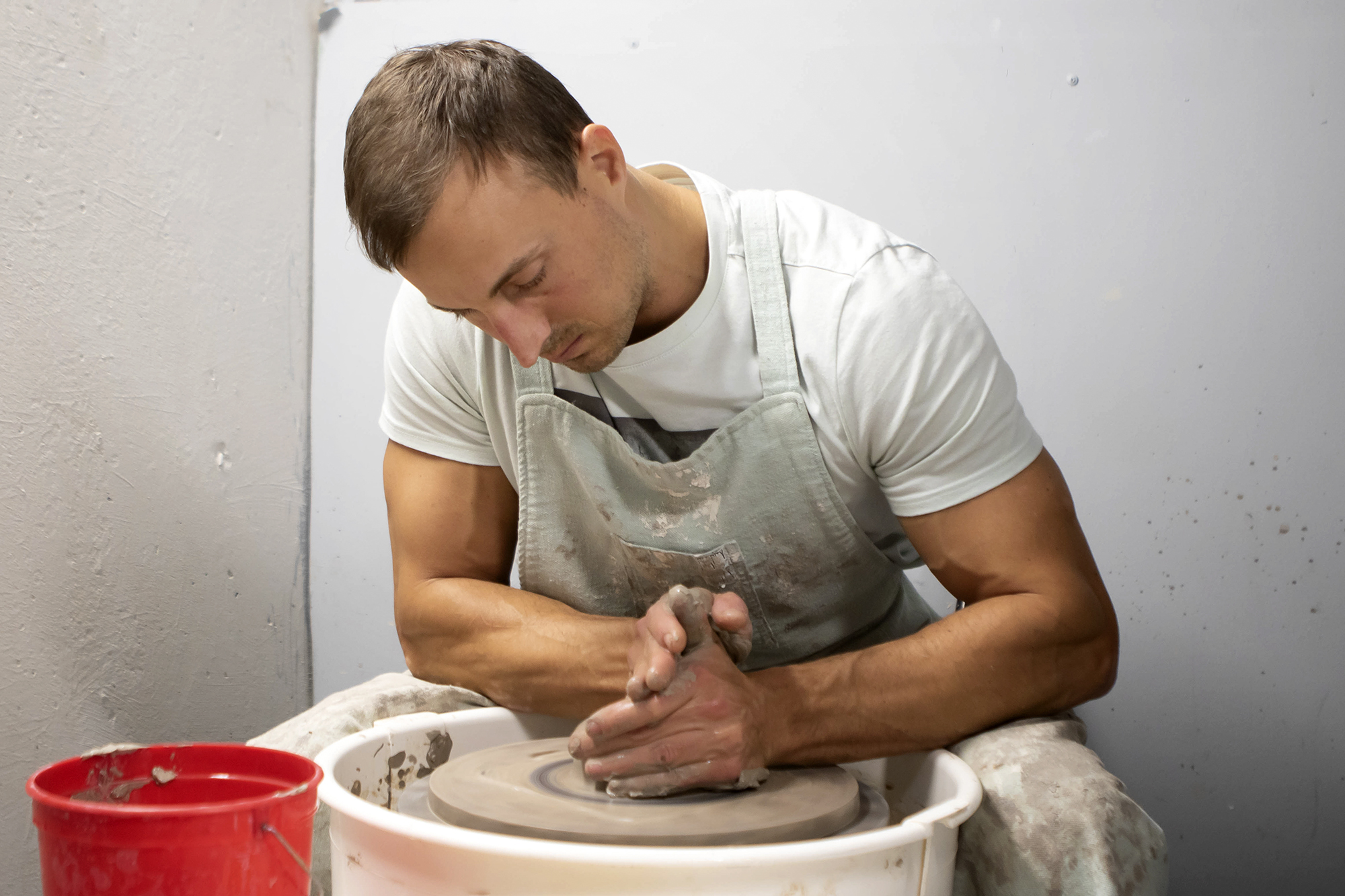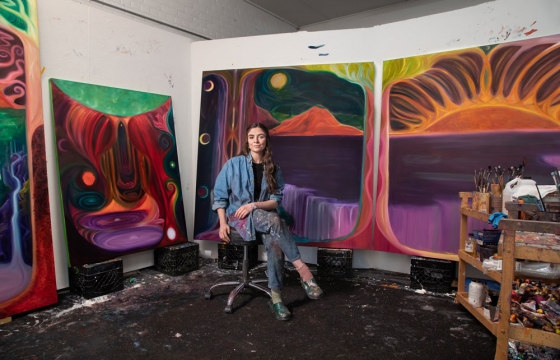Berlin Gallery Weekend 2023 Roundup
“Is it wise to take a van around Berlin on a day when widespread climate protests, which will block the inroads, have been announced?” someone asks in the car taking us, a group of journalists, from gallery to gallery. In past years, people talked about the first Gallery Weekend after the pandemic, or the first one after the war in Ukraine—the 2023 edition of the Berlin-wide event is set in the era of the polycrisis. Yet, as artists and art-adjacent cultural workers are invoking crises—climate, war, inflation—the market seems untouched by it all. It “demonstrates resilience,” says the Art Basel and UBS Global Art Market Report.1 But that glosses over a fundamental restructuring. While small galleries struggle, big ones grow. Berlin hasn’t had much luck with fairs, but it has a high density of galleries, fifty-five of which participated in this year’s Gallery Weekend. The event functions as a fair of sorts, but one where dealers are not required to leave their spaces. Can this display of art-market power serve as a barometer for the present moment, something sensitive to subtle changes in the environment? And are we at the cusp of something new, possibly something threatening?
“La idea se escapa” (the idea escapes), scribbled Frieda Toranzo Jaeger on the edge of one of her paintings. Galerie Barbara Weiss presents works by the 1988-born artist from Mexico City that easily read as critical of unbridled tech optimism. Self-driving cars going to space caricature already-cartoonish Silicon Valley utopias. At the same time, the paintings evoke a private world, playing on small-scale personal mythologies. One triptych shows a view of an airplane wing, at the very end of which a tiny flame erupts, as if a secret Surrealist joke is hidden within; in others, driverless cars function as escape pods, tenderly embellished with flowers. Toranzo Jaeger appears seduced by otherworldly temptations. One of the works can be opened and shut like a small fifteenth-century Flemish altarpiece. Rhinestones on its exterior spell out “Neocolonialism,” again turning an all-too-easy reading around. “Sick, I love slogan art,” says a fellow journalist at the preview.
ChertLüdde opens an exhibition on the work of Clemen Parrocchetti, an unsung hero of 1970s Italian feminism, for the first time outside of Italy. Parrocchetti, born in Milan in 1923, used what she called objects of “feminine culture”—textiles, cooking, sewing utensils—to create minuscule arrangements, large textile installations, and protest banners, and in fact, some of them were used at rallies. Parrocchetti, who came from an aristocratic background, was involved with militant groups in the 1970s, and thought of her art as an extension of her politics and vice versa. In the main gallery, Monia Ben Hamouda presents an installation of fragile sculptures drawing on Arabic calligraphy (the Tunisian Italian artist is the daughter of an Islamic calligrapher). The seemingly light steel pieces are repeated with variations throughout the spacious gallery, suspended from the ceiling and hovering over powdered spices mixed into swirls on the floor. Ben Hamouda’s variations recall Giacomo Balla’s painting The Hand of the Violinist (The Rhythms of the Bow) (1912), in which the Italian Futurist split movement into frames like a slowed-down film, and reminded us of an age-old question of representation: What is movement in time? On the wall, the sculptures are almost figurative: one hand holding a rock, and others in various stages of hurling them, referring to the ritual stoning of the Devil as part of the pilgrimage to Mecca, the Hajj, and also to protests where insurrectionists see no alternative but to pelt stones at armed forces.
For many years, the collective Slavs and Tatars managed to avoid gallery shows while they were regulars at biennials and other large international exhibitions. So now, at Kraupa-Tuskany Zeidler, they have enacted what feels like a reemergence. Behind a portal, roughly rendered as a vertically installed carpet dividing the gallery, they curated a small group exhibition with paintings, drawings, and a woven rug by frequent collaborators Andrey Anro, Dozie Kanu, Mina Masoumi, and Lin May Saeed. In the main room, Slavs and Tatars’ suspended psychedelic blown-glass lamps resemble melons—a pun on the Slavic etymology of дыть, which means blowing and is similar to the word for melon (дыня in Russian). The melon, according to Uzbek myth, was originally confined to the Garden of Eden, and was said to contain infinite wisdom in the cracks of its skin, which look like convoluted letters, if one could only decipher them. Incidentally, that is how the group’s work sometimes feels when they obsess over alphabets, phonemes, and their transfer throughout what they call the East—which, by their definition, is the region between the Berlin Wall and the Great Wall of China.
Way west, in Berlin-Dahlem, Fluentum is not technically a gallery, but a private collection of time-based media, nestled between nineteenth-century villas and sober postwar condo complexes. It is housed in the former headquarters of Nazi Germany’s air force. The site’s stark classicism, with its black faux-marble walls, communicates an intense atmosphere of oppression that has attracted film location scouts; it was used for instance in Quentin Tarantino’s Inglourious Basterds (2009). Now, Loretta Fahrenholz’s solo show Trash The Musical occupies the space, with the eponymous film (2023) at its center. But maybe more unsettling is Fahrenholz’s AI-generated collection of stills from Tarantino’s blockbuster, which re-create the film as an algorithmic puppet theater. Upstairs, the artist has set up a space with different mushroom-shaped lamps, again paired with AI-generated imagery of families picnicking in nature. Fahrenholz fuses the strangeness of faulty AI images with uncanny psychedelia.
If there is such a thing as a blockbuster exhibition this year, it is Cao Fei’s Duotopia at Sprüth Magers, or at least this is the one on everybody’s list. The presentation brackets a previous digital age—that of the 2000s, era of the proto-metaverse online game Second Life—with our own, where distinctions between the digital and the rest are erased. The 1978-born artist takes over the entirety of the vast gallery with a VR work and immersive installations. Oz (2022) introduces a new avatar for a new metaverse. It is androgynous and adorned with tentacles, like a benign and slightly tired Cthulhu. What really makes the show stand out, however, are the artist’s highly personal installation and video works. In Still Alive (2023), her mother grieves the death of her stepfather, who died from COVID-19 complications. For Isle of Instability (2020), Cao Fei shot her daughter on iPhone in her apartment while Singapore was under lockdown; there is an oblivious quality to the scene, her daughter retreating to an island of what looks like a sleeping bag next to a house plant and an air purifier. Cao Fei takes her work in a slightly different direction with her films Nova (2019) and MatryoshkaVerse (2022), the former a retro-futurist narrative about a scientist’s son trapped in a Soviet-era time machine, the latter a journey into the city of Manzhouli, at the border of Russia and China, where a theme park with a Matryoshka-shaped hotel and music shows appears more otherworldly than the metaverse ever could.
Perhaps the shows at this year’s Gallery Weekend feel a little safe—many familiar artists make a return—but the works tell of unease. Soon, and maybe next year already, everything will be different.
Philipp Hindahl is a writer and editor based in Berlin. He writes about art, architecture, and literature for magazines and newspapers.



